Order and Uncertainty: Five Abstract Painters
Curated by Timothy App
March 19 through April 30
Power Boothe, Connecticut
Julie Karabenick, Michigan
Patsy Krebs, California
Linling Lu, Baltimore
W.C. Richardson, Maryland


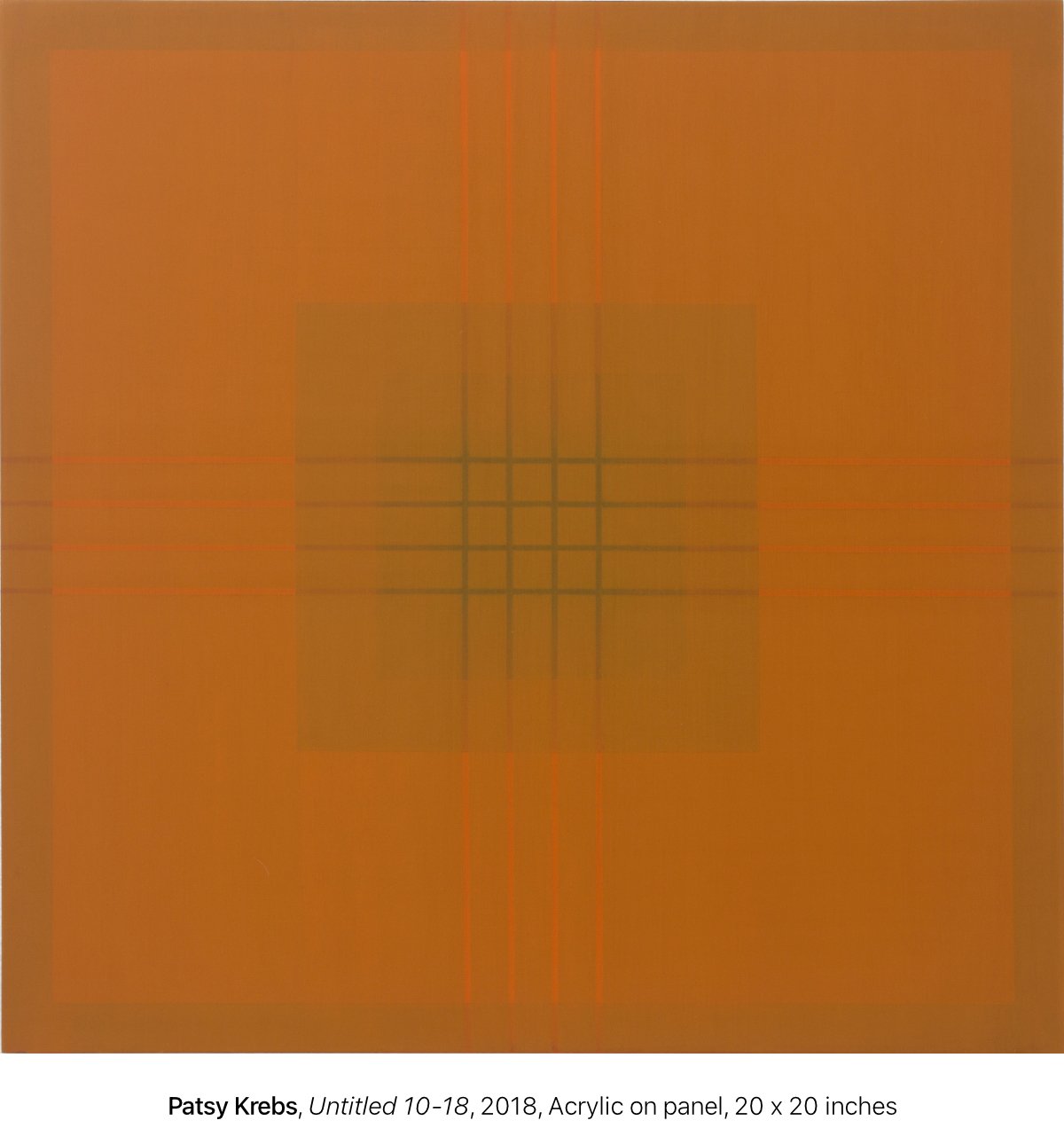
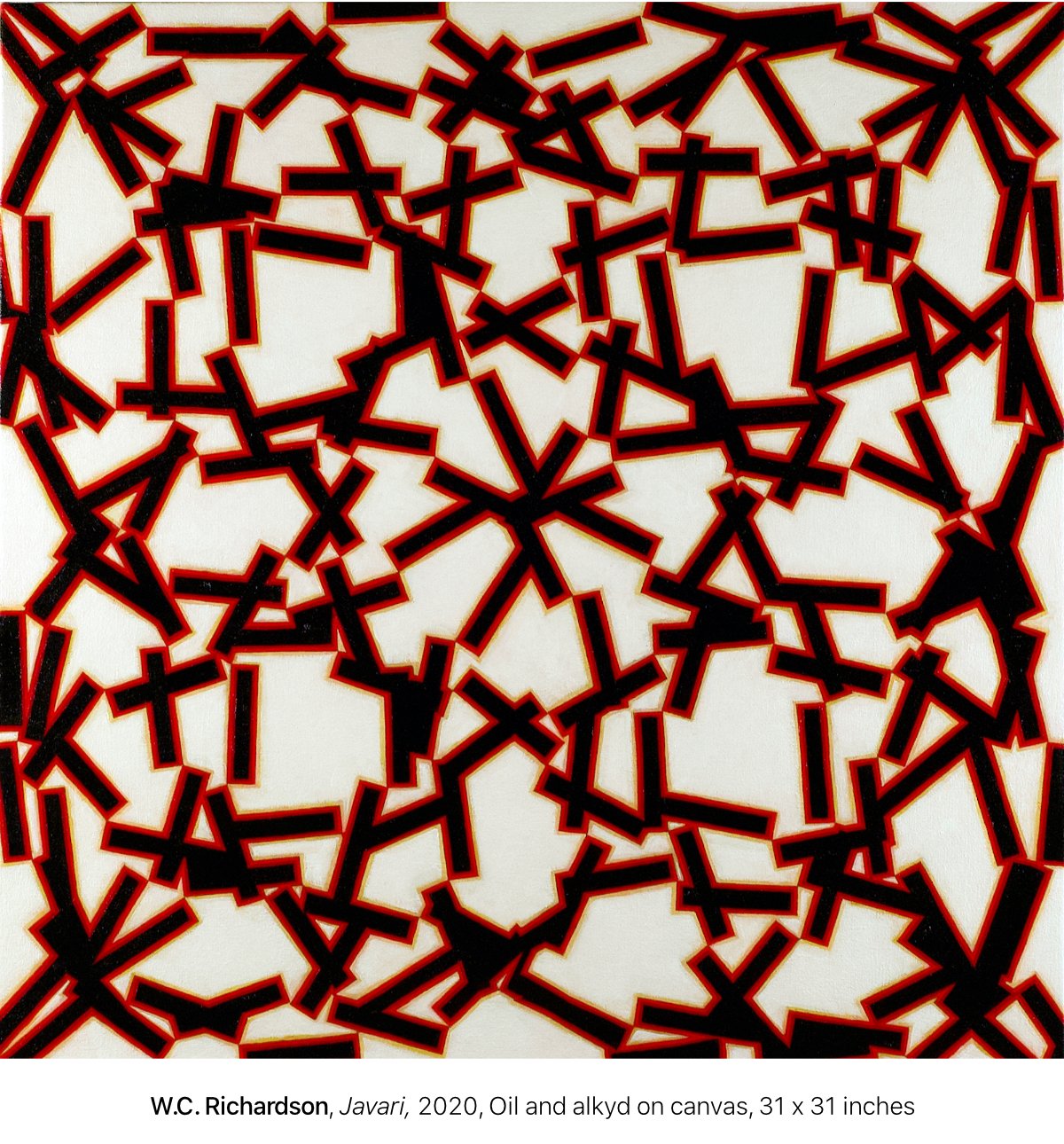
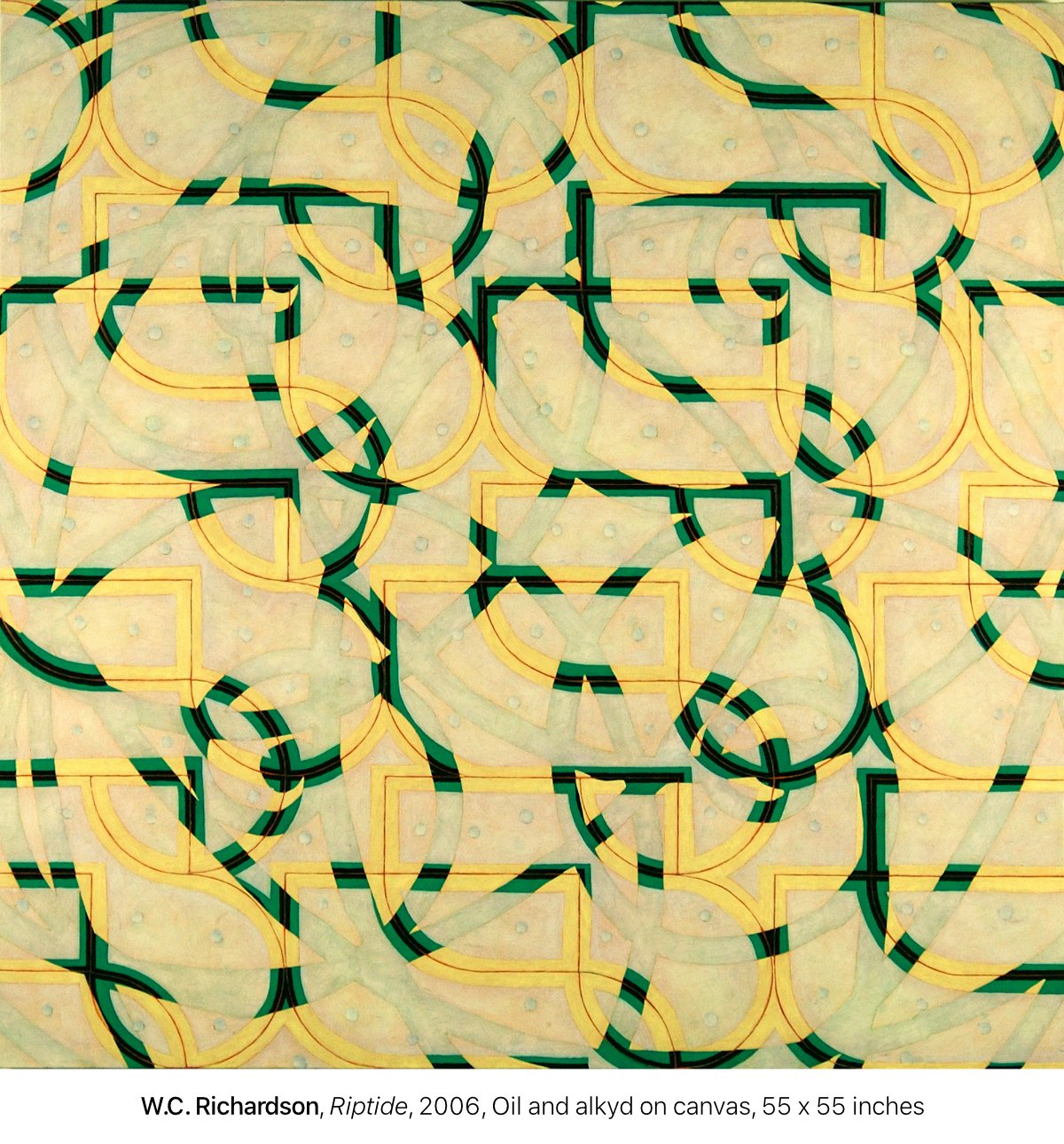


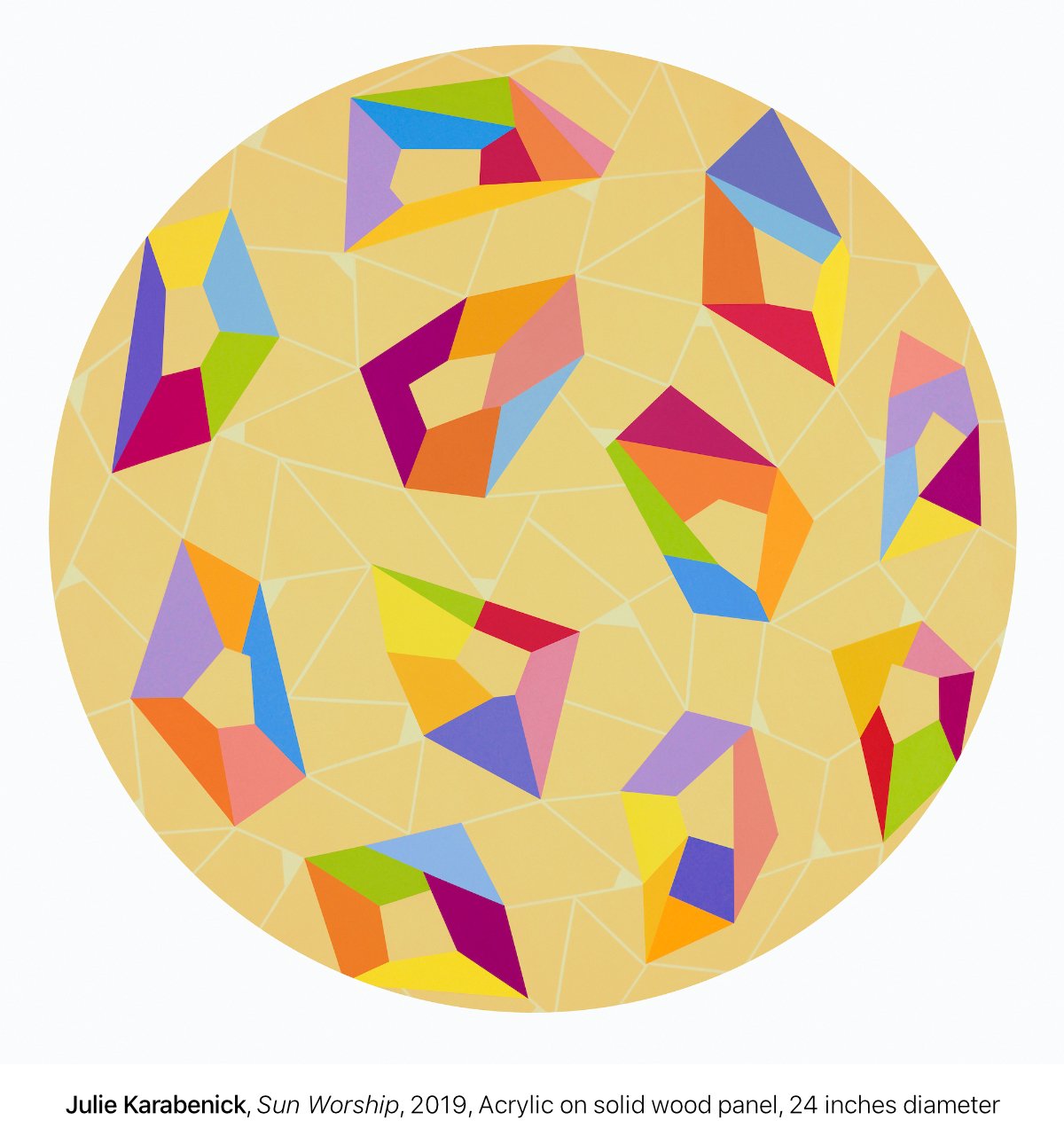
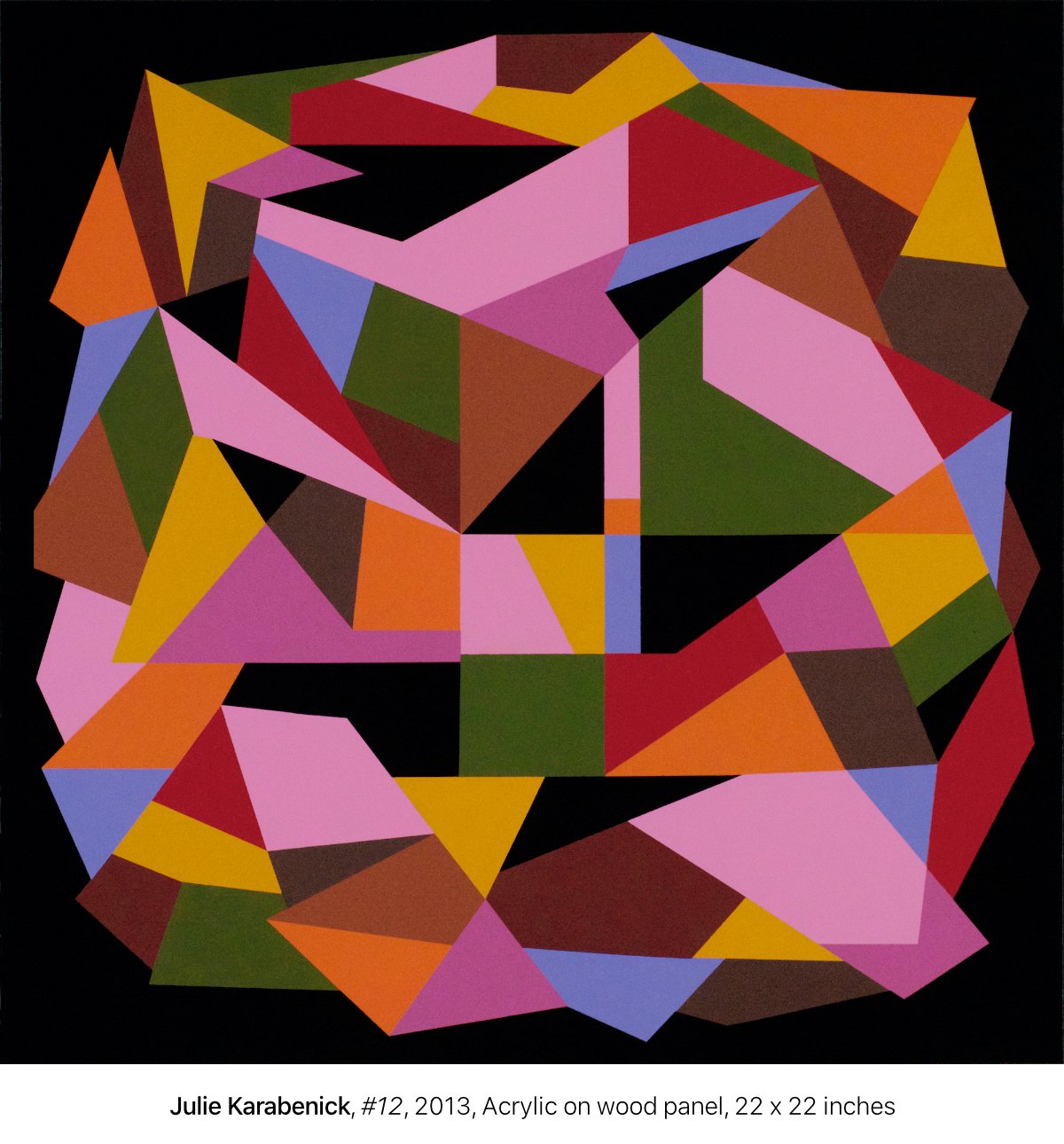
MONO PRACTICE is pleased to present “Order and Uncertainty: Five Abstract Painters," a group exhibition curated by Timothy App, featuring the work of Power Boothe, Julie Karabenick, Patsy Krebs, Linling Lu, and W.C. Richardson.
Order and Uncertainty: Five Abstract Painters
Essay by Timothy AppWorks of art, if they are at all poignant and affirming, and if they challenge our thinking, have a guiding, vital and sustainable premise. Art that holds our gaze, engages our hearts and minds, and nourishes our experience of the world has a specific, carefully conceived, and commanding point of departure. That is certainly the case for the work of the five abstract painters presented here.
The title of this exhibition, Order and Uncertainty, alludes to this proposition. In variously idiosyncratic ways, the works of these mature artists bring us to a nexus where the intention of the makers mingles with the means by which the works are created. For some abstract painters, the premise of their work is primordial chaos. Blind chance and utter unpredictability are the necessary ingredients for these romantics to begin their search for truthful resolution. These creators progress from the proverbial unknown towards some semblance of order, to a subjective locale of perceived resolution. Others, like the artists in this exhibition, possess, to varying degrees, a classical turn of mind. Rather than beginning with the chaos of the unknown, as do their romantic counterparts, they launch their work employing a clear set of a priori variables, a lineup of concrete precepts from which they venture outward, wending their way through uncertainty towards unforeseen discoveries. Through the medium of paint, they mine myriad pictorial possibilities, allowing the power, beauty and complexity of these variables to be unleashed in diverse, inventive and exhilarating ways.
This classical impulse for order is found abundantly in the annals of art history. Sophisticated systems for organizing space are at least as old as the Renaissance, or probably older, and often functioned as harbingers of profound change. Linear perspective, used to generate convincing pictorial space, is definitely one of the most familiar systems, and the use of the Golden Section to compose paintings, as well as architectural features, is another. In our time, the various systematic means employed by the artists in this exhibition to initiate an orderly trajectory are certainly nothing new. Such organizing principles have been part of the modern artistic rubric since Constructivism earlier in the twentieth century, as well as the advent of Minimalism and Systemic Painting in the 1960s. The direct use of the ubiquitous Cartesian grid, the underlying conceptual model for modern science, is commonly repurposed nowadays for art-making. As a starting point, the grid maps the very terrain upon which all subsequent activity unfolds. Grids can be singular and evenly dispersed, or multiple with subdivisions entering the fray. The diagonal can be brought into play, as well as the curve, along with other geometries. A natural outgrowth of the grid is repetition. Its orderly and sometimes mesmerizing effect creates an encompassing sensation that might encourage contemplation. But whatever means are employed by artists of this persuasion, one tacit agreement is struck—that these structural systems precede all else, acting as a pretext for whatever else may transpire.
The paintings in this exhibition are manifestly and unabashedly abstract. They do not represent or symbolize anything. They are not of or about something—they simply are. In this way, they are autonomous and do not depend for their inspiration on the visible world or realities outside their own. Rather, they draw us unequivocally into the present, into the moment of encounter. Their meaning lies partly in the ways in which we, as observers, experience them through the interplay of form, color, facture, and scale, and then of the myriad ways by which all of the chosen elements interact to achieve a convincing wholeness. And this wholeness, in turn, brings us to a moment of recognition at which our marvelous human capacity for empathy takes charge. And it is through empathy, after all, that meaning is constructed and made manifest.
For all of their objective formality, these paintings are undeniably uplifting, positive in tone and temperament, and, despite their abstractness, ineluctably connected to collective human experience. This encompassing quality is achieved both through each artist’s personal approach to the idea of order and, in most cases, to their use of provocative titles to facilitate rich interpretations. Beginning with complex grids, Power Boothe divides and subdivides pictorial space, sometimes with line alone, at other times with diagonals and curves, always allowing the sensitive application of color to follow suit. With transitory titles like Set-Rest, Boothe’s paintings establish an endlessly playful dance of color lines floating, touching, releasing, and sometimes unexpectedly changing color. Julie Karabenick, too, begins with an underlying grid, or multiple grids, allowing them to generate shapes that are often triangulated and that seem genetically imprinted. Inviting interconnected complexity into her work, she permits these shapes to confidently carry bold color.
While the inspiration for this exhibition centers on the ideas and context I have tried to express, it is especially meaningful for me to bring together the work of these five painters. They are all long-standing and good friends of mine, as well as fellow seasoned and highly disciplined artists who have been working for many years with unswerving devotion, and with whom I feel aesthetic kinship. It gives me great pleasure and satisfaction to present this work through the gracious generosity of Ruri Yi and Mono Practice Gallery. I hope you enjoy the show and come away from it inspired and enlightened.
__________
__________
Power Boothe (b. 1945) is an abstract painter whose career spans for five decades, and whose education includes the California College of the Arts, Colorado College, the Whitney Museum Independent Study Program, and the American School of Classical Studies in Athens, Greece. His work has been widely exhibited here and abroad, and most recently at the Fred Giampietro Gallery in New Haven. His work is included in many private and corporate collections, and can be found in the Metropolitan Museum of Art, the Museum of Modern Art, the Guggenheim Museum of Art, the Baltimore Museum of Art, and the Wadsworth Atheneum. He has been awarded an NEA Fellowship, a Guggenheim Fellowship, and a Pollock-Krasner Grant. Mr Boothe also has a distinguished career in academe, having taught at the School of Visual Art in New York, Princeton University, and the Maryland Institute College of Art as Co-director of the Mount Royal Graduate School. He was Director of the Art School at Ohio University, and was Dean of the Hartford Art School, where he is currently teaching. Colorado College awarded him an Honorary Doctor of Arts degree, and he has a Ph.D. in Philosophy from the Independent Doctorate in the Visual Arts. He lives and works in Harwinton, Connecticut.
Julie Karabenick (b. 1947 - d. 2020) was born in Chicago and raised in Cleveland. She attended the University of Michigan in Ann Arbor, where she received a BA degree in French and a Ph.D. in Developmental Psychology. Although she took college art courses in drawing and design, she was primarily self-taught as an artist. After finishing her education and raising a family, she turned her attention to abstract painting. Ms Karabenick’s work has been featured in ten one-person and two-person shows, as well as many curated and juried exhibitions in New York, Chicago, Ann Arbor, and other places. Her work is included in many private collections, and was included in the Art In U.S. Embassies Program. In addition to her career as a practicing artist, Ms Karabenick curated exhibitions of geometric abstract painting, and founded Geoform.net, an extensive and internationally acclaimed online archive of geometric abstraction that includes the work of and interviews with practitioners worldwide.
Patsy Krebs (b. 1941) is a native Californian who, early on, was deeply inspired by Abstract Expressionist painting. She studied art at the San Francisco College of the Arts before moving to New York to begin her long career as a painter. There, she was associated with the Park Place Gallery, an early enclave of artists working in a reductive manner. Returning to California, she eventually received her MFA degree from the Claremont Graduate School, and began her teaching and exhibiting career in Los Angeles. Ms Krebs has been a frequent instructor at the storied art colony, Anderson Ranch in Colorado. She has had numerous exhibitions of her work in Los Angeles, New York, and most recently in San Francisco at the Haines Gallery. Her work is included in many private and corporate collections around the country, and has been acquired by many museums, including the San Francisco Museum of Modern Art, the Long Beach Museum of Art, the Brooklyn Museum, and the Denver Art Museum. She has been the recipient of an NEA Fellowship, a Gottlieb Foundation Grant, and twice awarded the Pollack-Krasner Grant. Ms Krebs lives and works in Inverness, California and in remote southern Colorado.
Linling Lu (b. 1983) is originally from Guizhou, China and now lives and works in Baltimore. She received a bachelor’s degree in landscape architecture from Beijing Forestry University before coming to the US to study at the Maryland Institute College of Art, where she received first a BFA degree in painting, and then an MFA degree from the Hoffberger School of Painting. Most recently, her work has been exhibited at Hemphill Artworks in Washington D.C. Her work is included in private and public collections here and abroad, and is in the permanent collection of the US Embassy in Beijing. Notably, Ms Lu’s work is included in the current traveling exhibition titled
W.C. Richardson (b. 1953) is an abstract painter living in Washington, D.C. who received his BFA degree from the University of North Carolina at Chapel Hill, and his MFA degree from Washington University in St. Louis. With twenty-one one-person exhibitions and over one hundred group shows in fifteen states, as well as shows abroad, he has had a long and distinguished career. Most recently, his work has been exhibited at the Addison Ripley Gallery in Washington. His work is held in numerous private, public and corporate collections. Among the museums that include his work are the Hirshhorn Museum and Sculpture garden, the Corcoran Gallery of Art, the Ackland Art Center, and the U.S. Embassy in Algiers. Permanent installations of his work can be seen at the Ronald Reagan National Airport in D.C. and at the Reston Town Center in Virginia. Mr. Richardson has received numerous awards, including several from the Maryland State Arts Council. He is Professor of Art at the University of Maryland, College Park, where he has been Chair of the Department of Art. He has been an active visiting artist and juror at museums and academic institutions throughout the region and the country.